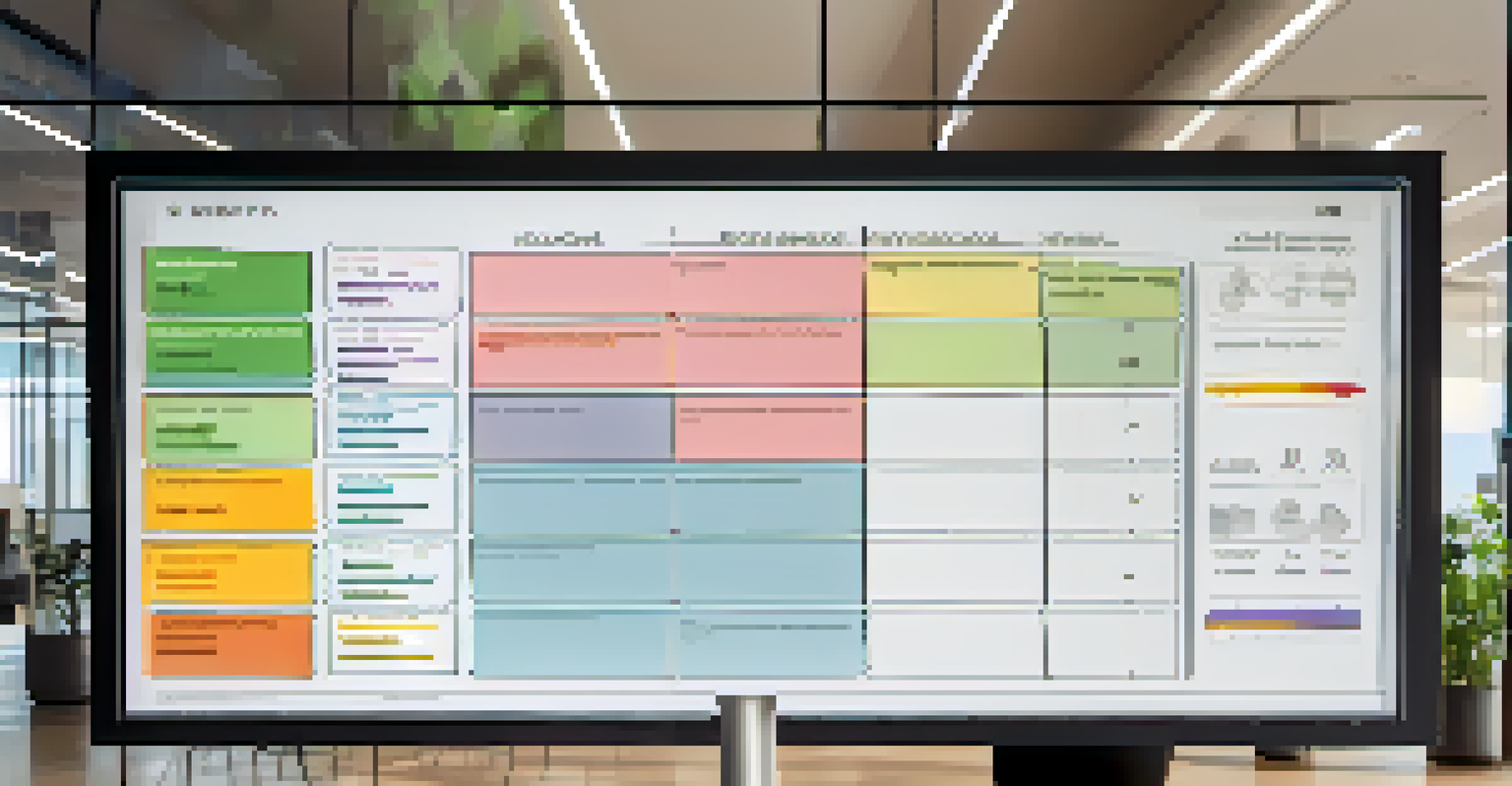Project Risk Management: Techniques for Successful Projects

Understanding Project Risk Management Basics
Project risk management is the process of identifying, assessing, and controlling risks that could potentially impact a project's success. By understanding the different types of risks—such as financial, operational, and technical—you can prepare your team to handle them more effectively. This foundational knowledge not only helps in minimizing potential setbacks but also enhances overall project planning.
Risk management is not a separate process; it is an integral part of project management.
Think of risk management like wearing a seatbelt in a car. While you hope to never need it, having that safety measure in place can save you from unexpected bumps along the road. In this way, project risk management acts as a safety net, providing you with a clearer pathway to achieving your project goals.
Ultimately, the key to effective risk management lies in proactive planning. By anticipating and addressing risks before they manifest, you can steer your project toward success with confidence.
Identifying Risks: The First Step to Success
Identifying risks involves thoroughly analyzing all aspects of your project to uncover potential pitfalls. This can be done through brainstorming sessions, expert consultations, or using checklists based on past projects. The goal is to create a comprehensive list of possible risks that could derail your project if not addressed.

Imagine you’re planning a vacation. You’d consider factors like weather, travel restrictions, and accommodation options. Similarly, by identifying risks early on, you can create contingency plans—similar to packing an umbrella for unexpected rain. This preparation allows your team to respond swiftly should any issues arise.
Proactive Risk Management is Key
Anticipating and addressing risks early helps steer projects toward success.
Additionally, involving team members from different departments can provide a broader perspective on potential risks. Engaging diverse viewpoints not only enriches the identification process but also fosters a collaborative environment where everyone feels invested in the project’s success.
Assessing Risks: Prioritizing What Matters Most
Once risks are identified, the next step is to assess them based on their likelihood and impact. This assessment helps you prioritize which risks require immediate attention and which can be monitored over time. Utilizing tools like a risk matrix can be particularly beneficial, as it visually categorizes risks and allows for better decision-making.
In the middle of difficulty lies opportunity.
Consider the difference between a minor delay in a project timeline and a complete budget blowout. While both are risks, their potential effects on your project vary significantly. By assessing risks, you can allocate your resources effectively—focusing your efforts on the most critical issues that could jeopardize your project's success.
Ultimately, the goal of risk assessment is to create a clear action plan that addresses high-priority risks while still keeping an eye on lower-priority ones. This balanced approach ensures that you’re prepared for the worst while still making progress toward your project goals.
Developing Risk Response Strategies for Mitigation
After assessing risks, it’s time to develop strategies to mitigate them. This involves determining how to either avoid, transfer, accept, or reduce each risk. For example, if a risk involves a key team member being unavailable, you might cross-train other team members to fill that role if necessary.
Think of it like a sports team preparing for a big game. Coaches develop strategies to counter the opposing team’s strengths. Similarly, your risk response strategies should be tailored to address specific risks in your project, ensuring that you’re ready to tackle challenges head-on.
Effective Communication Matters
Keeping stakeholders informed about risks fosters transparency and collaborative decision-making.
Moreover, it's crucial to document these strategies clearly so that everyone on the team understands their role in risk management. Effective communication ensures that all team members are aligned and can act swiftly if a risk materializes.
Monitoring Risks: Keeping an Eye on the Horizon
Monitoring risks is an ongoing process that involves regularly reviewing and updating your risk management plan throughout the project lifecycle. This ensures that you’re aware of any new risks that may arise and allows for timely adjustments to your strategies. Regular meetings or check-ins can be effective in keeping everyone informed about the current risk landscape.
Picture sailing a boat; while you may start on a clear course, unforeseen winds can shift your direction. Monitoring risks allows you to adjust your sails and navigate smoothly through any turbulence that comes your way. By staying vigilant, you can ensure that your project remains on track.
Additionally, engaging your team in the monitoring process fosters a culture of accountability and proactive problem-solving. When everyone is responsible for identifying and reporting risks, the likelihood of issues being overlooked diminishes.
Communicating Risks: Keeping Stakeholders Informed
Effective communication of risks to stakeholders is crucial for maintaining transparency and trust. This involves not only sharing identified risks but also detailing the strategies in place to manage them. Regular updates can keep stakeholders informed and engaged, which is essential for collaborative decision-making.
Imagine you’re watching a movie with friends. If someone suddenly interrupts the plot with unexpected news, it could change everyone’s perspective on the story. Similarly, keeping stakeholders in the loop allows them to understand the project’s risks and empowers them to contribute to solutions.
Learn and Improve from Risks
Reflecting on past risks enhances future project strategies and builds a knowledge base.
Moreover, using clear and concise language when discussing risks can make complex ideas more digestible. By avoiding jargon and presenting information in a relatable way, you can ensure that everyone, regardless of their background, understands the risks and the plans to address them.
Learning from Risks: Fostering Continuous Improvement
After a project concludes, it’s important to reflect on the risks encountered and how they were managed. This post-project evaluation can provide valuable insights that can be applied to future projects. Documenting lessons learned helps create a knowledge base that benefits your entire organization.
Think of this process like reviewing a game after it's over. Coaches analyze plays to understand what worked and what didn’t. Similarly, analyzing your risk management strategies can reveal strengths and weaknesses, helping you improve your approach for upcoming projects.

Encouraging a culture of reflection and learning cultivates an environment where team members feel comfortable sharing their experiences. This openness not only enhances individual skills but also contributes to the overall success of your organization.